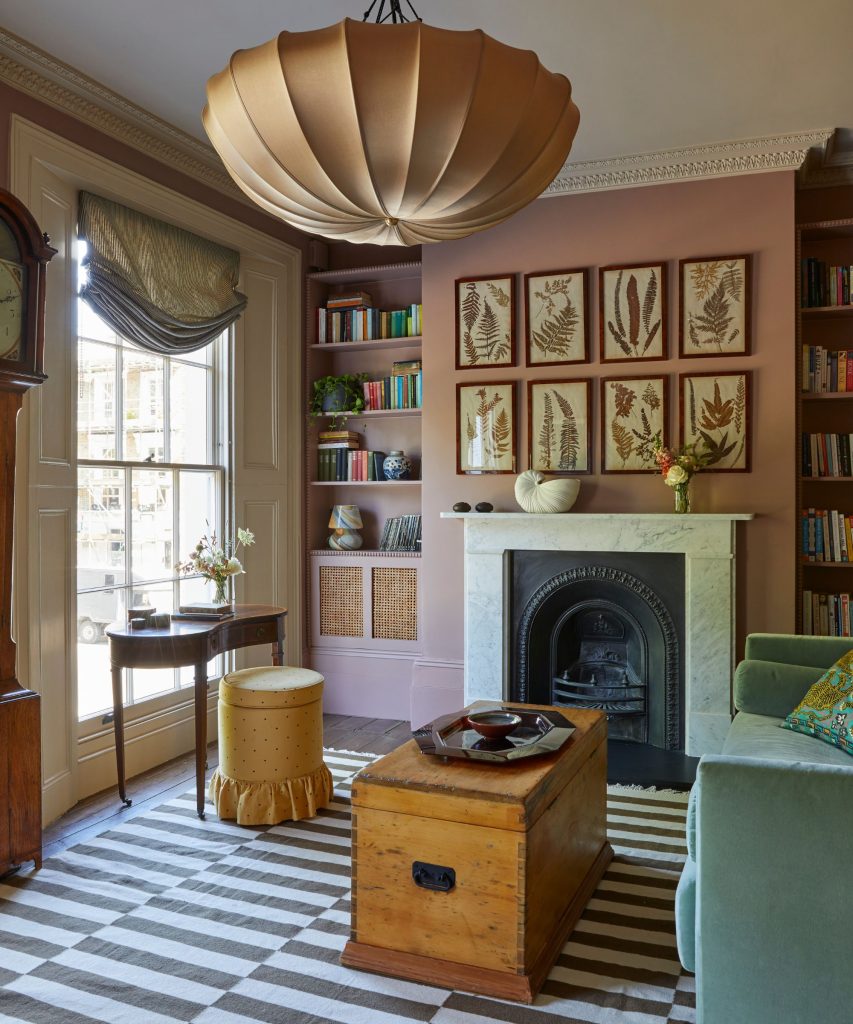The connection between simplified spaces and mental health: creating a peaceful home

The Role of Environmental Design in Mental Health
The spaces we inhabit profoundly affect our mental well-being. A cluttered, chaotic home can heighten feelings of stress and anxiety, while a simplified environment promotes tranquility and focus. Our immediate surroundings have a powerful influence on our thoughts and emotions, inviting us to explore how our living spaces can be tailored for better mental health.
Key Aspects of Simplified Spaces
- Minimalism fosters an organized mindset.
- Natural Elements like plants enhance mood and reduce stress.
- Open Layouts contribute to a sense of freedom and ease.
In the realm of mental wellness, minimalism has gained traction as a means to cultivate a more organized mindset. By removing excess items and focusing on only what is essential, individuals often find a renewed clarity of thought. For example, decluttering a workspace can lead to increased productivity, as the mind is less distracted by unnecessary visual stimuli.
Moreover, incorporating natural elements into our spaces has been shown to make a significant difference in our mental health. Studies have demonstrated that plants can help lower cortisol levels, which are associated with stress. A simple addition, such as a few houseplants, can enhance the ambiance of a room while boosting our mood and fostering creativity. The American Psychological Association cites research indicating that just a single potted plant in an office can reduce feelings of anxiety, making the workplace more pleasant and productive.
Open layouts are another crucial aspect of designing for mental wellness. Traditional cramped spaces can evoke feelings of confinement and overstimulation. In contrast, an open layout allows for greater airflow and light, contributing to a sense of freedom and ease. Homes with ample windows and open areas encourage social interaction and promote a communal atmosphere, essential for mental well-being. Architectural designs, particularly those embracing the open floor concept, have been popularized across the United States, reflecting a growing understanding of how physical space impacts human behavior.
Research indicates that environments filled with natural light and fewer distractions can lead to improved concentration and reduced anxiety levels. A noteworthy study conducted at the University of Toronto revealed that participants in environments with ample daylight reported heightened cognitive performance. By making conscious choices about the design and organization of our homes, we can create a sanctuary that nurtures our well-being and provides a refuge from the chaos of daily life.

Understanding the nuances of how these choices affect us opens up possibilities to live more harmoniously with ourselves. In an age where mental health is increasingly prioritized, exploring the relationship between our environments and mental wellness presents a compelling avenue for improvement. By carefully curating our living spaces, we set the stage for a more balanced and fulfilling lifestyle.
DIVE DEEPER: Click here to learn more
Transformative Power of Simplification
The journey toward a peaceful home begins with the transformative power of simplification. By distilling our living environments to the essentials, we cultivate spaces that not only reflect personal identity but also enhance mental clarity. In a society often overwhelmed by consumerism, the practice of simplifying can serve as an antidote, inviting serenity into our daily lives. Indeed, minimalism is not merely an aesthetic choice; it is an intentional path toward better mental and emotional health.
The Psychological Benefits of Decluttering
Decluttering extends beyond just tidying up a space; it represents a profound psychological shift. Research has shown that clutter can create visual chaos that contributes to feelings of anxiety and disarray. In contrast, a simplified space fosters a sense of control and order. A 2010 study published in the journal Personality and Social Psychology Bulletin revealed that individuals in cluttered environments tended to be more stressed and fatigued, while those in organized spaces reported higher levels of motivation and energy.
One effective method to achieve this simplification is the practice of the konmari method, developed by Marie Kondo. This approach encourages individuals to keep only the items that “spark joy.” By engaging in this process, people often find a deeper emotional connection to their belongings, which can lead to a sense of fulfillment and psychological relief.
Creating a Calming Atmosphere
In addition to decluttering, the elements used within a simplified space greatly impact mental health. Here are some key components to consider for creating a calming atmosphere:
- Soothing Colors: Pastel shades or earth tones can create an inviting and relaxing ambiance.
- Comfortable Textures: Soft fabrics and easy-to-clean materials prevent overload on the senses.
- Strategic Lighting: Incorporating soft, adjustable lighting helps in creating a tranquil environment.
- Functional Furniture: Multi-functional pieces can reduce clutter and create open spaces.
Through careful consideration of color, texture, and furniture selection, individuals can establish an environment that promotes calmness. For instance, a living room painted in light blues and greens with natural fibers invites tranquility, inviting family members to relax and reduce stress. Such choices reflect an understanding of how environmental design can shape our moods, allowing for moments of stillness in our fast-paced lives.
As we peel back the layers of clutter and distraction, we inch closer to crafting a home environment that nurtures our mental health. By intentionally designing our spaces with simplicity in mind, we open ourselves up to emotional resilience and greater overall well-being. Exploring the connection between simplified spaces and mental health paves the way for innovative approaches to personal and communal living.
| Advantage | Importance |
|---|---|
| Reduced Clutter | Less visual chaos leads to lower stress levels. |
| Enhanced Focus | A simplified environment improves productivity and concentration. |
| Improved Mood | Thoughtfully arranged spaces can uplift spirits and foster tranquility. |
| Better Relationships | Peaceful spaces facilitate quality interactions among family members. |
Living in a space where orderliness prevails creates a palpable sense of calm. In the context of mental health, the impact of simplified spaces cannot be overstated. Studies have shown that individuals living in cluttered environments often experience heightened levels of anxiety, while those in minimalistic settings find respite from daily stressors. Designing your home with a focus on simplicity not only reduces visual chaos but also fosters a profound sense of balance and clarity. This kind of environment enables better emotional regulation and increases one’s ability to tackle life’s challenges. In fact, environments emphasizing natural light, soft textures, and strategic use of color have been reinforced by mental health professionals as means to enhance overall well-being.A well-arranged home can be transformative, providing a sanctuary that not only nurtures the mind but also strengthens bonds among household members. By making conscious decisions about which items to keep and how to arrange them, the home can transition into a haven where peace and harmony thrive.
Mindfulness and Intentional Living
The connection between simplified spaces and mental health extends into the realm of mindfulness and intentional living. These practices invite individuals to engage fully with their environment, fostering an awareness that can greatly enhance emotional well-being. Mindfulness emphasizes living in the moment and appreciating the surroundings, encouraging a focus on what truly matters. When applied to home environments, this approach results in spaces that not only nurture the spirit but also promote a sense of calm.
Mindful Organization Techniques
Integrating mindfulness into home organization can lead to practices that not only declutter physical spaces but also declutter the mind. Techniques such as the 80/20 rule — a principle suggesting that 80% of outcomes come from 20% of inputs — can be beneficial when considering belongings. This perspective urges individuals to evaluate their possessions critically, advocating for the removal of items that do not serve a meaningful purpose. By embracing this technique, homeowners can alleviate the burden of unnecessary objects, allowing for a more peaceful ambiance.
Additionally, cultivating relationships with the objects we choose to keep can be enriching. Engaging in rituals such as gratitude lists or journaling can center focus on the items that truly resonate with personal identity, fostering a deeper connection to one’s environment. This practice amplifies emotional attachment to cherished possessions, making the space not just clutter-free but also meaningful.
The Role of Nature in Simplified Spaces
Another essential dimension of creating a peaceful home involves incorporating natural elements. Biophilic design — a concept that connects people with nature — has garnered attention for its mental health benefits. Studies have shown that exposure to natural light, greenery, and outdoor elements can enhance mood and reduce stress levels. Adding plants, utilizing natural light through strategically placed windows, and opting for organic materials can transform spaces into calming retreats.
- Indoor Plants: Introducing greenery indoors can increase air quality and promote relaxation. Studies have found that interacting with plants can lower levels of cortisol, the stress hormone.
- Natural Light: Maximizing natural light not only brightens a room but also supports circadian rhythms, leading to better sleep and improved mood.
- Outdoor Spaces: Creating inviting outdoor areas, such as gardens or patios, encourages residents to step outside, connecting with nature and reducing feelings of isolation.
Through these practices, the home becomes a sanctuary, where each corner reflects a mindful choice. Spaces filled with natural light and greenery not only enhance emotional resilience but encourage a sense of community and connectedness, vital for mental health.
Creating Flexible Spaces for Adaptability
A vital yet often overlooked aspect of simplified spaces is the importance of adaptability. Homes designed with flexibility in mind can support various needs as they evolve, reducing feelings of constraint and frustration. Multi-functional furniture can embody this adaptability, allowing spaces to transform based on current requirements. For instance, a dining table that doubles as a workspace can accommodate remote work days while still providing a sense of normalcy during meals.
This forward-thinking approach to space design relies on elements that can shift seamlessly, illustrating how thoughtful planning contributes to a peaceful home. This adaptability allows for the integration of personal growth, maintaining the peace established through simplification.
Ultimately, embracing mindfulness, incorporating nature, and designing adaptable living environments all converge to strengthen the profound connection between simplified spaces and mental health. These elements weave together a tapestry of emotional resilience, creating not just a visually pleasing environment but a haven for mental clarity and serenity.
DISCOVER MORE: Click here to learn about the impact of simplicity in design on your well-being</p
Conclusion: Crafting Your Peaceful Oasis
The intricate relationship between simplified spaces and mental health underscores the profound impact our environments have on our well-being. As explored, incorporating elements of mindfulness, nature, and adaptability transforms our homes into sanctuaries that foster emotional resilience and tranquility. Simplified spaces invite individuals to engage intentionally with their surroundings, creating an atmosphere conducive to serenity and personal growth.
By embracing mindful organization techniques, one can not only declutter physical areas but also clear mental pathways, paving the way for clearer thinking and reduced stress levels. Furthermore, integrating biophilic design principles through natural light and greenery serves as a reminder of nature’s calming embrace, significantly enhancing mood and overall health. Likewise, the importance of flexible spaces cannot be overstated; homes that adapt to our evolving needs instill a sense of empowerment, reducing feelings of confinement.
Ultimately, the connection between simplified spaces and mental health encourages us to be intentional about our homes as we explore new dimensions of comfort and peace. As we move forward in cultivating our living environments, consider this: every choice matters. Each decision, from what we bring into our homes to how we arrange our spaces, plays a role in shaping our mental landscape. In the journey towards a peaceful home, let simplicity guide your way, nurturing both your surroundings and your well-being.


